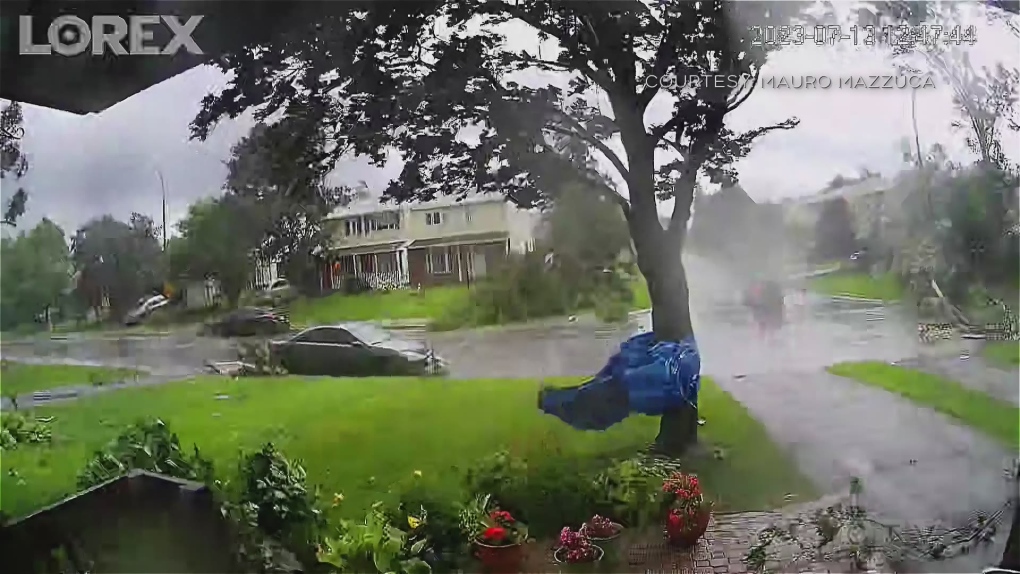
More than one tornado could have hit Ottawa on Thursday: NTP
CTV
Researchers from the Northern Tornadoes Project at Western University are in Ottawa investigating the damage from Thursday's storm, and there are possible signs more than one tornado touched down.
Researchers from the Northern Tornadoes Project at Western University are in Ottawa investigating the damage from Thursday's storm, and there are possible signs more than one tornado touched down.
At least one tornado is confirmed to have hit Barrhaven Thursday, but Connell Miller, wind impacts researcher for the Northern Tornadoes Project, told Newstalk 580 CFRA's CFRA Live with Andrew Pinsent on Saturday morning that the team is investigating the possibility there was more than one.
"That's the reason we haven't released any preliminary ratings, as of yet. We are starting to think that potentially two tornadoes impacted the area," he said. "We are actively working on that and hope to have something later, around noon, about the final rating of the event."
Miller says tornadoes often follow similar patterns, dealing a thin line of damage that is much longer than it is wide; however, all of the videos and images shared of the event Thursday raised questions for researchers.
"There was lots of videos and photos submitted on social media and when we started looking at where it was filmed and the angles, it started to not make sense a little bit," Miller said. "So, we went looking in those areas where the videos were showing there may be a second tornado and we started finding damage, so we're actively trying to figure out how many tornadoes impacted the area."
Miller said researchers found a lot of structural damage, such as shingles and cladding gone, roof decking ripped but no roofs were completely ripped off.
"You see things indicative of a tornado, you see 2x4s thrown and embedded, that's a really classic sign of a tornado. You tend to see specific patterns of debris, where it started and where it ended up, all of it indicating at least one tornado in the area," he explained





















 Run 3 Space | Play Space Running Game
Run 3 Space | Play Space Running Game Traffic Jam 3D | Online Racing Game
Traffic Jam 3D | Online Racing Game Duck Hunt | Play Old Classic Game
Duck Hunt | Play Old Classic Game